Moving Average That Saved Millions Of Dollars
Do you know how many times the price moves in the sideways direction? If I showed you this chart, would you say the price has a high or a low probability of moving sideways next? According to the Billionaire Trader Paul Tudor Jones, the Markets Trend only about 15% of the time, the rest of the time, they move sideways. The reason why his quote is shared on the internet quite frequently has to do with his trading strategy and how he made a fortune from trading.
You see, a while ago, I made a video on How Strangers Made more than 100 million dollars with a trend trading strategy. One of the experts who taught these strangers how to make millions from trading was Richard Dennis. When Paul Tudor Jones was in college, he read an article on Richard Dennis and thought that Dennis had the greatest job in the world. This got him interested in trading.
Lucky for him, his uncle was a very successful cotton trader. After Jones finished college, he went to his uncle and asked if he could help him get started as a trader. But his uncle had a better idea and sent him to the best and most famous cotton trader he knew, Eli Tullis. He offered Jones a job on the floor of the New York Cotton Exchange. Jones said Eli was a magnificent and the largest cotton speculator in the world when he went to work for him.
After gaining experience with the cotton market, he branched out into other commodities and financial instruments such as stocks, indices and currencies. And after working as a commodities broker, he also founded the hedge fund Tudor Investment Corporation. But what really made him famous was his bet on the US Stock Market crash in 1987, making a return of 125.9%, earning an estimated $100 Million.
When he was interviewed later, some of the things he said revealed part of his trading strategies and philosophy.
Jones tries to buy and sell at turning points. He said, and I quote, “I believe the very best money is made at the market turns. Everyone says you get killed trying to pick tops and bottoms, and you make all your money by playing the trend in the middle. Well, for twelve years, I have been missing the meat in the middle, but I have made a lot of money at tops and bottoms.” End quote. On a chart, it will look something like this.
This can sound like he was a complete reversal trader and against the trend, but that’s not true because when he was asked if he used any specific strategies for protecting his portfolio? He said, you always want to be with whatever the predominant trend is. And when asked how do you determine the trend? He said his metric for everything he looks at is the 200-day moving average of closing prices. If the price went below it, he would get out of the positions and play defense.
The same simple yet effective 200-day Moving Average rule also helped him avoid millions of dollars of loss, especially during the 1987 Market Crash.
Trading tops and bottoms combined with a 200-period moving average sounds good, but trading tops and bottoms have a problem, and it can sound something like this: “as soon as I take the trade, the price moves in the sideways direction”.
This probably happened to you as well. Some might even think that it’s their fault that the trade got stuck, and maybe they made a mistake while analyzing the momentum. There are even 2 ways to solve this problem. But let me ask you this first: Do you know how many times the price moves in the sideways direction? Is it 40, 50, or 60% of the time? If you don’t know how many times the price consolidates, how can you know if it was your mistake or not?
To show you what I mean, I analyzed around 26000 candles and found this.
First, I analyzed the US Stock Market Index and found that out of 5770 1-day candles, 2367 or 41% were in a range. The percentage of range candles is surprisingly low because the stock market index has been moving in the upward direction in the long run, with big crashes in between. Since it’s made up of multiple top stocks, its movement is relatively better than a single stock or a Forex Pair such as Euro USD.
When I analyzed Euro USD, I found that out of 5344 1-Day candles, 49% were in a range like this. And after including wide ranges such as this, a whopping 80% of the candles were in a range.
Then I did some more analysis and found that GBPUSD was also in a range of around 80% of the time, USDJPY was ranging 74% of the time, NZDUSD was a bit on the low side, ranging 59% of the time, and GBPCAD was ranging 77% of the time.
That’s 26086 1 day candles, and 19438 of them were ranging. That’s 74.5% of the candles! That’s way more than half!
The reason why I chose 1-day candles was that if a higher timeframe, such as 1 Day, is ranging, the slightly smaller timeframes are most likely in a wide range and choppy as well. So if your trades go in the sideways direction as soon as you take it, it’s not always your fault, the probability of that happening is simply too high. However, this doesn’t mean you should completely ignore it. Because you can improve your win rate by using this data and avoiding the following mistakes.
Mistake number 1. If you know that the price stays in a range most of the time, the biggest mistake you can make is setting your profit target more in the direction of the entry direction. Here’s what I mean. Let’s say this is your chart, it’s an uptrend, and you are trying to take an entry at the bottom of the pullback. Let’s say you used the MACD strategy to decide the entry point and set the stop-loss below the potential end of the pullback. Since the 1.5 to 1 Reward Risk Ratio is the best according to the data we have found, let’s say you use that, and your profit target looks something like this.
But if you have been watching Trading Rush for a while and have seen some of my trades, you will probably remember that I never force a 1.5 to 1 Reward Risk Ratio and set the profit target like this unless necessary.
That’s because if the price starts moving in the sideways direction as soon as I take the trade, it has a higher probability of moving like this between the support and resistance. And if the price starts moving like this, the 1.5 to 1 reward risk ratio profit target that was set above the resistance will have a lower probability of getting triggered. You and I don’t want that. So what I simply do is set the profit target before the next reversal point. In this case, below the swing high resistance. This not only increases the probability of making a profit but also reduces the probability of getting stuck in a trade if the price starts consolidating after the entry, which, as we saw before, has a higher probability of happening.
Mistake number 2. You see, another rule that the Billionaire Trader Paul Tudor Jones said he followed, was this: “If you have a losing position that is making you uncomfortable, the solution is very simple: Get out, because you can always get back in. There is nothing better than a fresh start.”
If the price goes and stays in consolidation for a long time, it can mean that the price is not likely to reach the target price that you originally set when you entered the trade. In this situation, it is very important to re-evaluate your position and decide if you should keep the trade active or not. If this new sideways movement information you have doesn’t support the decision to stay in the trade, it’s better to cut your losses and get out without losing money. A good move in this situation is to move your stop-loss to the breakeven point, which means you will at least not lose money when you exit the trade. After all, there is nothing better than a fresh start.

